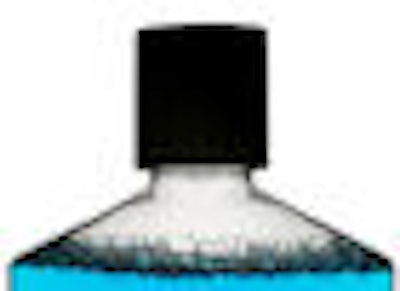
A Michigan lawyer has filed a class-action lawsuit against Procter & Gamble (P&G), claiming the company's Crest Pro-Health mouthwash is responsible for brown stains that developed on his teeth after he used most of a bottle.
Mark Rossman, an attorney who practices in Troy, MI, and his partners Gerard Mantese and David Hansma filed the lawsuit in a federal court August 6.
“Any mouthwash that is effective at killing plaque and gingivitis could cause some degree of tooth stain. ...”
— Laura Brinker, P&G spokesperson
"Plaintiff, who has always taken exemplary care of his teeth, commenced using Crest Pro-Health as part of his oral hygiene routine, and, before the bottle of mouthwash was three-quarters used, unsightly brown stains appeared in between Plaintiff's teeth," the lawsuit states. "These stains had not existed before Plaintiff used Crest Pro-Health mouthwash."
The complaint accuses P&G of violating the Michigan Consumer Protection Act by not putting a warning label on the mouthwash, alerting consumers to the potential for staining.
While P&G acknowledges that the active ingredient in Crest Pro-Health -- cetylpyridinium chloride (CPC) -- can lead to tooth discoloration in some individuals, "it is a very complex matter because the way stains develop on teeth is attributed to lifestyle factors, biology, and oral care habits," Laura Brinker, a P&G spokesperson who specializes in the Crest brand, told DrBicuspid.com. "In fact, any mouthwash that is effective at killing plaque and gingivitis could cause some degree of tooth stain even if it doesn't have CPC."
The company's Web site echoes Brinker's comments:
Like all mouthwashes that effectively fight plaque and gingivitis, Crest Pro-Health Rinse can contribute to temporary, surface-level brown tooth discoloration, which is reported by a small percentage of individuals. ... Tooth discoloration could be exaggerated by many other factors, such as existing tartar on teeth; consumption of colored beverages like coffee, tea, and red wine; or tobacco use.
In fact, Brinker said, the brown stains could be a sign that the mouthwash is working for some people.
"CPC combines with the bacteria to kill the germs, and the dead bacteria can collect in certain areas of the teeth that are harder to brush and thus appear as brown stains," she said. "But it is a preventable and reversible issue for people who are taking regular care of their teeth with tartar control toothpaste, a power toothbrush, flossing, and visiting their dentist regularly."
Rossman told the Associated Press that, despite repeated flossing and brushing, he has so far been unable to remove the stains.
"I have a pretty good toothbrush," he told the AP. "Nothing seems to work."
While P&G has received inquiries from consumers about the possibility of tooth discoloration, "when you look at the number of people and households who have bought our products, 99.9% have not expressed this concern to us," Brinker said. "Since Crest Pro-Health Rinse launched in April 2005, we have seen that we have a high number of consumer testimonials, high repeat rate of buyers, and growing dental professional recommendations."
Another Crest Pro-Health product, Enamel Shield toothpaste, does carry a warning that its active ingredient -- stannous fluoride -- may cause surface staining of teeth, according to a recent article in the Miami Herald.
Rossman's complaint is being filed "on behalf of Plaintiff and all other consumers in the state of Michigan who have purchased or used Crest Pro-Health mouthwash and have suffered tooth staining." It seeks damages, attorneys' fees, injunctive relief, and a jury trial.
Copyright © 2009 DrBicuspid.com



















